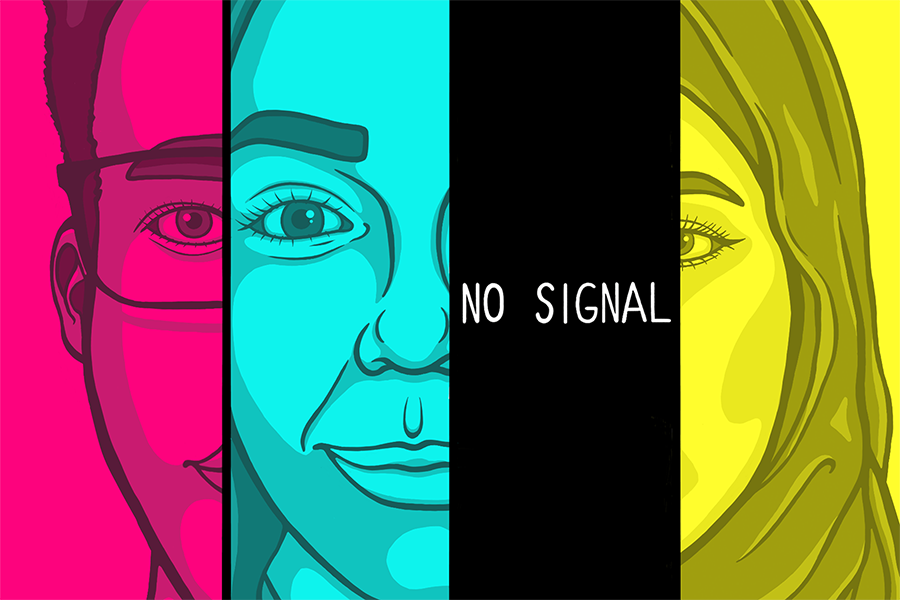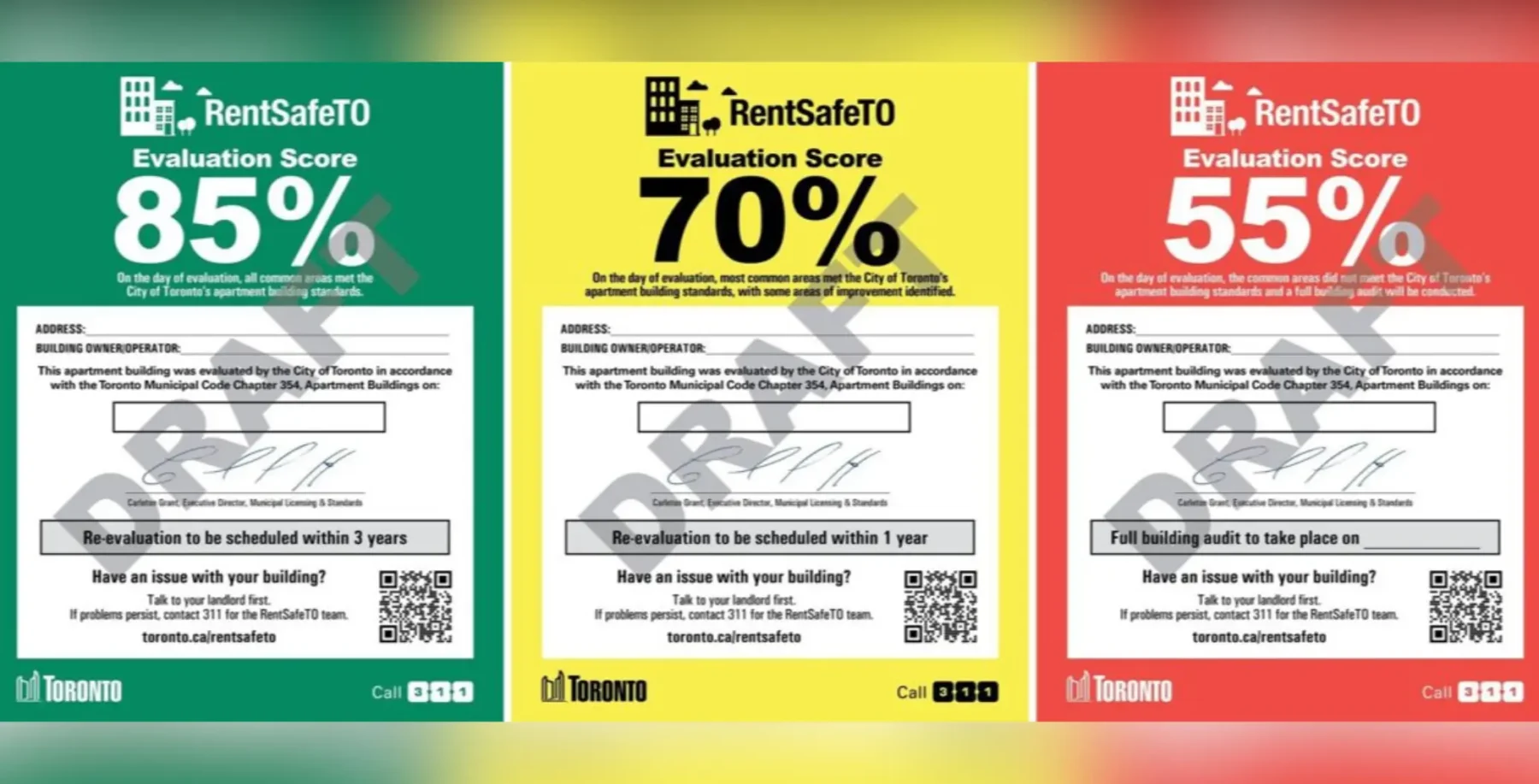
Sheila Prospere has an internet problem.
“The internet is way too expensive,” she says. “And I can’t really live without it.”
Prospere relies on the internet for all sorts of things, including her daughter’s education. As a school bus driver living in community housing in Scarborough, she’s seen students appear and disappear as they switch from in-person to online learning. “Like a merry-go-round,” she says.
When it came to her own 10-year-old daughter, the choice between in-person and online school was easy: she sent her to school. Her internet plan from Altima Telecom is too slow to handle the rigours of online education. She learned that back in March when the COVID-19 shutdown forced students across the province to finish the school year from home.
“The connection was very poor,” she says, remembering the times she watched her daughter submit an assignment only to get an email the next day from a teacher saying they never received it. “We had all sorts of problems.”
Her daughter still relies on online communication more than ever: for research and assignments, to communicate with her teachers, to access her online class accounts.
There’s a major disconnect in the city when it comes to online access, and it’s gotten wider in the last seven months. So much of life now – from grocery shopping to banking, education to work conferencing – is happening online. Even things like making appointments for COVID tests and getting exposure alerts are less accessible to people at higher risk.
Jill Barnes doesn’t have a computer so she relies on her WiFi-enabled cell phone. Since the pandemic hit, it’s been absolutely essential.
She’s on the Ontario Disability Support Program (ODSP) and has had trouble accessing personal service workers for homecare. She feels isolated at her place at Jane and Wilson, and uses her phone to meet virtually with family and discussion groups on Zoom. She also uses it to access many government supports as they’ve shifted more and more to digital. She can’t even access her Bell phone bill anymore, which has gone paperless: she has to call in and ask what she owes.
Between a support group run by the Brain Injury Society of Toronto, social groups through the Centre for Independent Living Toronto and volunteering at ACORN Canada and the Federation of Metro Tenants’ Associations, she finds herself Zooming two to three times per week.
“It helps make me feel a bit more connected,” Barnes says.
Without her online volunteering, she couldn’t afford the internet plan she uses to do it: she pays for it with a volunteer benefit she gets from ODSP.
If not for the income from their partner, who is a baker, Djenaba Dayle wouldn’t be able to afford the internet. As a service industry event worker, their income disappeared when restaurants shut down.
“The pandemic derailed my life like it did so many other people,” Dayle says. In the meantime, they’ve been taking a wine course to build a new skill and increase earning power post-pandemic.
Without the internet, they wouldn’t be able to keep up. They also wouldn’t be able to Facetime with their mother, who is HIV positive and living in Northern Quebec. Dayle would have even missed their grandmother’s funeral service, which streamed online in the early days of the pandemic.
“I grew up pretty poor,” Dayle says. “And what I’ve learned from working at restaurants and engaging people with higher income is that they don’t necessarily know what poor people deal with. It’s not malicious, but there’s a disconnect.”
There’s a name for that phenomenon: the digital divide.
The internet is absolutely essential to daily life, but it’s not available to everyone. A 2016 census found 14 per cent of Canadians lived in “low-income” households. Almost half of Canadian households with incomes under $30,000 do not have access to high-speed internet. Increasingly, people are sacrificing essentials like food, rent or medication in order to afford it.
This is a country-wide problem, but it’s critical here in Toronto, Canada’s biggest city. And as the pandemic has exacerbated the digital divide, it’s also made the efforts to close it much more urgent.
A basic human right
“People need internet,” says Alejandra Ruiz Vargas, national leadership representative at ACORN Canada (Association of Community Organizations for Reform Now). “It’s no longer a luxury. It’s a human right.”
If that wasn’t already self-evident, it’s becoming impossible to ignore.
In 2016, the United Nations declared that “the same rights people have offline must also be protected online.” In Canada that same year, the federal government and the Canadian Radio-Television and Telecommunications Commission (CRTC) declared broadband internet a basic essential service across the country. They’ve made moves toward that goal over the last few years, but some activist groups are saying they need to step up the effort, and quickly.
Canada’s first Feminist Economic Recovery Plan, co-authored by the YWCA and the University of Toronto Rotman School’s Institute For Gender and the Economy, identifies the digital divide as a major barrier to recovery. OpenMedia, meanwhile, has a letter-writing and billboard campaign imploring the federal government to move up their stated goal of ensuring that 100 per cent of Canadian homes and businesses have access to high-speed internet (at least 50/10 Mbps) from 2030 to 2025.
ACORN has been running the Internet For All program since 2013. The housing rights advocacy group has ramped up its efforts since the pandemic started, putting pressure on the Canadian government, the country’s major telcos and the CRTC to ensure that accessible and affordable internet is available to everyone at an acceptable basic speed, regardless of income.
In a new call to action for the pandemic and recovery period, ACORN is asking the CRTC and telecom industry to bridge the digital divide by offering all low-income Canadians and fixed-income seniors free retail internet service whether or not they meet the current eligibility criteria. And for all customers regardless of income, it’s asking for unlimited data at no extra cost, no overage charges, no price increases and a ban of disconnections for non-payments or data caps during the pandemic.
Various recent surveys have identified Canada as one of the most expensive countries in the world for internet and phone data services, even more so than countries like the United States and most European nations.
Both Bell and TekSavvy (the country’s biggest independent internet service provider) have actually raised internet rates during the pandemic, something that Vargas argues should not be acceptable right now. Nor legal.
“The government should be stepping in and saying, ‘No, this is not under discussion,’” she says. “We asked them to [do that] and their answer was that they don’t have the power.
“That’s just not true. You have the power, you are the government. When the virus was threatening people’s health, you acted quickly to shut down the country. [Internet access] is a crisis, too. You should make legislation very quickly to protect all Canadians.”
Hans Parmar, a media relations spokesperson from Innovation, Science and Economic Development Canada, says the government “has taken a series of actions to drive competition in the internet and wireless marketplace.” He continues: “Increased competition means increasing choice for Canadians and lower prices.”
But advocacy groups are calling for more governmental oversight, for ISPs to offer basic affordable rates as a social and moral responsibility.
Canada allocated $1.7 billion in the 2019 budget to support high-speed internet including the new Universal Broadband Fund to set up fibre, fixed wireless and low-orbit satellites to connect communities that need it most. In his recent throne speech, Justin Trudeau said he plans to accelerate the project and make it more ambitious.
In 2017, the federal government launched the Connecting Families program with the explicit goal of closing the digital divide. It’s an investment of $13.2 million over five years to connect hundreds of thousands of people to the internet and offer $10/month service to lower-income Canadians.
That deal is available to around 220,000 households (a number ACORN says is too low). Families are eligible if they receive the maximum Canada Child Benefit. OpenMedia is urgently recommending that program eligibility be expanded to include single people and seniors.
Connecting Families relies on voluntary participation from the telcos with no government subsidy or incentive. Still, Parmar says approximately 55,000 families are currently receiving that price, 17 per cent of whom did not previously have home internet.
Here in Toronto, the $10/month rate is offered by Rogers’s Connected For Success program and is available for people living in Toronto Community Housing (TCH). Parmar says over one million invitation letters have been sent out across the country and that everyone eligible should have received one.
Prospere, who lives in TCH, says she wasn’t aware of the program until she heard about it at a recent ACORN meeting. She’s been trying to sign up, but Rogers has been telling her they won’t send a technician right now because of the COVID crisis – the precise reason so many people need it now more than ever.

An equity conversation
When it comes to improving fibre infrastructure and ensuring access, much of the attention has rightfully been on rural and Indigenous communities.
But the divide exists in Toronto, too, even if it’s less visible. It rides the border of income.
Last October, Lawrence Eta became the city’s first Chief Technology Officer – a recognition of the inextricability of technology in the life of the city and the daily lives of its citizens.
In January, he helped put together the city’s first Digital Infrastructure Plan. Among five working principles, equity and inclusion is listed first.
“Internet access is not just a technology conversation, it’s an equity conversation,” says Eta.
During the pandemic, the city launched the Digital Canopy program, which aims to provide free WiFi to 6,000 units and approximately 13,000 Torontonians in underserved or vulnerable communities. The program launched last month with two high-rise towers at 200 and 210 Woolner in the Rockcliffe-Smythe community. The goal is to connect 25 buildings by the end of this year.
Eta acknowledges it’s just a start, but wanted to get out of the gate and do something concrete quickly during the pandemic. The long-term goal, he says, is the full closing of the digital divide. Even though Sidewalk Labs has pulled out of the Quayside Project, “smart city” – a model that will see data and technology embedded into the fabric of Toronto – is still an oft-touted buzzword for the future. A smart city has to be for everyone living in it.
“If in 10 or 12 years there’s another pandemic, we don’t want to be in this same situation where people are being left behind,” he says.
Digital Canopy is based on a donation from tech company Cisco. It’s one of a handful of donations and public-private partnerships Eta and the city are pursuing. Similar relationships have helped them roll out free WiFi at city-operated long-term care homes and at homeless shelters. Google and Facebook are partners in the city’s ShopHERE program, which helps give independent shops digital tools for e-commerce.
Eta says Toronto’s private tech sector has an excess of talent, and that it’s necessary to work with them – the six major telcos have built the internet fibre infrastructure that provides access across the city.
But working with those major companies, which are extremely powerful in the country, requires buy-in on their end. And as for-profit companies, their motivations are more about income and growth than equity and access.
When TekSavvy raised prices at the beginning of October, the independent ISP blamed the virtual duopoly of major telecom carriers, Bell and Rogers, which were forced by the CRTC to lower wholesale rates in 2019 but successfully lobbied the federal government to put the decision on hold. So outside of the programs for lower-income families, rates are still soaring.
“If you can’t get on [the Connecting Families program for $10 a month] then it’s the full price, and that’s really hard to afford no matter which provider it is,” says Prospere.

The digital divide starts at home
When it comes to digital access, public libraries have long been ahead of the game.
Digital inclusion is now a stated part of Toronto Public Library’s mandate, one they’re aiming to strengthen over the next five years, though they’ve been providing access for nearly as long as there have been publicly available computers.
For people without internet access at home, the forced closure of the libraries at the beginning of the pandemic was a major obstacle. In a recent Bridge report survey, more than half of the people who use the libraries’ computers say it’s their only internet access.
Though advice was for people to stay home, TPL made sure the WiFi stayed on 24/7 at all 100 branches. It wasn’t rare to see people outside the libraries, in parking lots and in parks, getting as close to the signal as possible.
TPL made it a priority to get the computers open and accessible in all branches as soon as they got the green light to reopen. And even though Ontario has returned to a modified stage 2, computers at TPL branches remain open and available.
Pam Ryan, director of service development and innovation, says TPL is in a unique position as the focus on accessible public space pushes them further into advocacy. But Ryan, who is also a member of the Urban Libraries Council Digital Equity task force, says that when it comes to digital equity, libraries need to be thinking beyond the walls of their own branches. Especially now that people are increasingly encouraged to stay home.
“While it’s great to have public infrastructure like libraries, if those buildings are closed, people don’t have access,” she says. “What we need to be advocating is digital access for home connectivity.”
TPL recently partnered with Renewed Computer Technology and got help from an anonymous donor to offer Internet Connectivity Kits for vulnerable residents. The kits include a laptop, a WiFi hotspot and four months of unlimited data.
The library also has a Hotspot Lending program, which sends out 1,000 devices for six-month loans. In August, they teamed with the city on the WiFi On Wheels program, offering free WiFi from their bookmobile in parks in neighbourhoods hit hard by the virus. And they recently participated in the international Digital Inclusion Week, providing digital literacy workshops and talks.
“We know these are band-aid solutions,” says Ryan. Things like hotspot lending aren’t scalable. We know we need food security, too, but that doesn’t mean we shouldn’t have food banks.”

A divided city
One of the most visible manifestations of the digital divide during the pandemic is education.
Parents have had to decide whether to send their children to school in person or online. But if you don’t have access to sufficiently fast broadband, it’s not much of a choice. Some homes might have one computer shared by the whole family. Some students are attending classes on their phones.
Annie Kidder, executive director of People For Education, says the digital divide isn’t just about technology.
“It’s not just, ‘Do you have the hardware?’ but, ‘Do you have the support?’” she says. “It’s about: What does it mean for kids to be learning online? It usually assumes there will be people at home and available to help them.”
The rollout of Ontario’s hybrid in-person/remote learning plan has been a bit of a disaster, with many students switching streams, teachers assigned last minute to classes and prolonged battles over class sizes. There’s also been confusion about how students will be evaluated, and whether the school boards will hold them to the usual curriculums, evaluation methods and standardized testing.
Kidder says the chaotic rollout could have been avoided if the province planned for this with a task force back in the spring, one in which all the stakeholders – parents, teachers, unions, youth mentors, coaches and psychologists – had a seat at the table. Instead, the province has simply been reacting to the crises in front of them. The lack of flexibility and preparedness hasn’t left room for nuances like the digital divide.
“The province released a COVID strategy for schools,” she says. “It was 8,000 words and the word ‘equity’ didn’t appear once.”
She says OISE released a map of where parents had opted in to online learning; surprisingly, the biggest clusters were not the affluent areas. Instead, it mapped onto the neighbourhoods in the city that are at the highest risk for COVID, which are largely divided along income and race.
Those are the neighbourhoods where parents might be frontline workers; where they might be living intergenerationally and don’t want to take the risk of having children infect their grandparents; where they might be living in high-rise towers with elevators and common spaces where you can’t easily socially distance.
Toronto is a divided city, and not just digitally, but internet access intertwines with everything – and it’s another barrier disadvantaging already vulnerable people.
“This is why we call it the digital divide,” says Vargas. “We’re always saying ‘We’re in this together.’ We are not in this together. We will be the day we have affordable internet for everyone.”
Richard Trapunski and Alejandra Ruiz Vargas expand on this article in the latest episode of the NOW What podcast, available to stream on Apple Podcasts and Spotify or playable directly below:












